N° 4
April 2022
—
TTS Italia is the Italian ITS Association founded with the aim to promote the development and deployment of Intelligent Transport Systems (ITS) in Italy. |
|
|
|
|
|
|
|
The interview by Morena Pivetti
|
|
|
|

“An innovative, dynamic and flexible transport and logistics plan, focused on technology”.
Salvatore Rossi's first interview as coordinator of the Commission in charge of the Plan.
Salvatore Rossi's CV speaks for itself. There is no need to add anything. Renowned industrial economist, banker and company manager, former general manager of the Bank of Italy, now president of Telecom Italia, to name just a few stages. The Minister of Sustainable Infrastructures and Mobility has chosen him as coordinator of the Commission in charge of drafting the new General Plan for Transport and Logistics more than twenty years after the previous one, and this marks a discontinuity and is a precious indicator of the direction that Enrico Giovannini intends to give "to the identification of the infrastructures and the priority mobility systems for the sustainable development of Italy". As stated in Article 1 of the decree dated January 21, 2022, which kicked off the plan, hinged on the Commission, the course of the work, the actors in its drafting and at the same time appointed Salvatore Rossi.

An appointment that aroused a certain curiosity among the insiders: why did not an expert in the sector be preferred? This is the opening question to Salvatore Rossi, who gave his first interview to TTS Italia on the plan.
Minister Giovannini, himself an economist and statistician with a strong generalist vision in this world - he replies - wanted me as coordinator precisely because I was involved in the economic development of the country. We never lose sight of the macro-economic reason why it is essential that transport and logistics, with their specificity, develop ensuring the growth and prosperity of Italy. I have a background as an industrial economist; I worked on manufacturing and high technology. Never on transport. However, I am a curious person; I like to learn the new so I decided to embark on this adventure with a lot of good will. And passion. I am pleased to get to know a sector that I have not attended before and which is the bearer of substantial interests.
Why a Master Plan for Transport and Logistics right now?
First, because more than twenty years have passed since the previous one while a law is in force that would require it as a periodic and constant document. It is an opportunity that should not be wasted. In 2017 another very important programmatic document was drawn up which took stock of the situation. I am talking about Minister Graziano Delrio's 'Connecting Italy': he announced an updated Plan for Transport and Logistics, which, however, never arrived. Ours will be in discontinuity with the old Plan and with 'Connect', both in the setting and in the language: the 2001 one is too long, verbose and encyclopedic, the most recent one is very consultative. We are thinking of a streamlined, clear and understandable document with two key words: 'development' because it will guide the country's economic and social development, and 'sustainable' because the mobility of people and goods heavily affects the environmental and social sustainability of the country. economical progress.
Will it be complementary to the National Recovery and Resistance Plan (PNRR), the real novelty of the last two years?
Of course, the PNRR makes many resources available and all sectors must contribute to spending them well. It is an opportunity to plan investments to build the future of Italian society, and transport is a vital network of the economy, it must help to increase the Gross Domestic Product. It is necessary to make prudent and far-sighted use of the funds made available by Europe, two thirds, and by national budget laws, a third. This is an amount of resources never seen before, a unique opportunity and the moment is propitious: it becomes essential to have a long programming tool, planning and, precisely because of the abundance, not to waste it on short-term projects.
Compared to twenty years ago, everything has changed, especially as regards technology.
The evolution of technology is continuous and incessant, in the transport sector it has changed enormously. I am thinking of the high-speed rail revolution, the boom in air transport, apps, sharing mobility, any comparison is impossible. And now to the interaction between the environment and technology: to the latter we entrust our hopes of saving the planet. We will try to understand what will be the trend lines of technological development, the most probable and promising for the next ten years to guide both public investments, therefore the priority destination of resources, and the regulatory framework, the rules that will guide it. Precisely because it is fundamental we will allocate a chapter to technologies.
Let's go back to the environmental variable, so dear to Minister Giovannini to change the name of the ministry, to which he added the sustainable specification.
The world of infrastructures and the transport of goods and passengers cannot, as I said before, really ignore the environmental variable. Europe is committed to the front line: it has done and will do more to reduce emissions than the United States, China and Asia. The environment will be the first guideline of the new plan. Unfortunately, the war makes the future very uncertain, in particular regarding energy and possible alternative sources.
Final goal?
The evolution of technology is too impetuous and continues as well as the supply of businesses and the demand of consumers and of manufacturing and services: we do not aim to fix once and for all the list of interventions to be done between now and the next ten years. In conclusion, it will be a dynamic and flexible tool that will project itself into the future as much as possible by identifying already visible trend lines but allowing for continuous updates.
Who is Salvatore Rossi. Born in Bari on January 6, 1949, Salvatore Rossi graduated in mathematics from the University of Bari in 1975. He completed study on economic at the International Monetary Fund (IMF) and the Massachusetts Institute of Technology in Cambridge (MIT). He was a member of the Board of Directors of the Foundation of the International Center for Monetary and Banking Studies (ICMB) of Geneva and of the Board of Directors of the Einaudi Institute for Economics and Finance (EIEF). He was also a member of the Steering Committee of the Italian Strategic Fund, of the Presidency Council of the Italian Society of Economists, of the Eurosystem Information Technology Steering Committee and a member of the Commission for the quality assurance of statistical information. He was hired in 1976 at the Bank of Italy where he held various leading roles. In recent years he has been part of the Italian delegation to both the G7 and the G20. He is a university professor, chairs various committees, is the author of several books and articles. |
|
|
|
|
|
laBconsulenze Group is a partner of the Public Administration with added-value supplies and services in the area of road safety and urban mobility. It is one of the few players in this sector Italy that are able of proposing itself as a sole technological supplier, providing integrated services to the PA for the management of the sanction cycle referring to infringements of the Highway Code, from the installation of devices to software development, and for the management of taxes and assets.
An experience of over 30 years, 10 companies, 150 employees and several collaborators, with a large presence of young people and women, who work to propose solutions with high added value and a marked rate of innovation to over 150 customers in Italy, with a widespread diffusion throughout the national territory. The Group also relies on important foreign contracts, with installations in numerous areas of the world, including Iceland and Emirates. Kria, the last company to join the Group, in particular, has open commissions and ongoing projects with distributors across five continents for the detection of all types of breaches, where only 3D computer vision is applicable. Kria's technology is able to detect, in addition to the traditional violations of exceeding the limits of instant or average speed and traffic light infractions, also various types of behaviors such as: distracted motorists by the use of mobile phones or driving without fastened seat belts, dangerous driving, overtaking not allowed, driving against the traffic (one way only streets), queue jump near motorway exits, "left-turn-on-red" ... Kria's overseas business consists of managing ongoing orders and institutional marketing to lay the foundations with the local authorities to carry out the approval of the devices.
Within the Group, the ISO 9001, 27001, 27017, 27018, 27701, 45001, 14001, 18295, 37001 certifications are held, as well as the organizational and management models compliant with Legislative Decree 231/01 with an external supervisory body and develop Agid certified software. The Group also counts on national and international patents relating to mobility and road safety. Among these, Kria devices are designed and manufactured using patented stereo-vision and license plate reading technologies. laBconsulenze Group is therefore characterized by a complete offer.
—
INTEGRATED VIOLATION MANAGEMENT SERVICE, FROM THE PLANT TO THE SOFTWARE
The main area of action concerns the production of fixed and mobile road traffic control and monitoring devices, also for sanctioning purposes, for infringements of the Highway Code. Added to this is the management of administrative sanctioning procedures, whether they are intended for subjects residing on the national or international territory and the management services of administrative and judicial litigation, with the supply of software, data processing, printing and mailing of documents, up to support operational as part of the sanctioning cycle of infringements of the Highway Code. It is guaranteed the qualified contribution of resources with distinctive skills, able to provide advice and operational support.
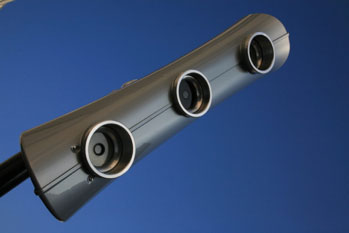
Another important area of activity is that of collection: laBconsulenze is a company recorded in the Register of Dealers and is, therefore, able to provide the extrajudicial and compulsory collection service for violations not obliterated by the law. The support for local authorities, therefore, is well-rounded.
A separate chapter concerns safety. The Group offers road safety systems and technologies for motorists and cyclists; systems for the management of parking areas, with the supply of parking meters and operational support through qualified human resources; solutions for video surveillance, medical devices and devices for security and access control. Final note for the innovative technology, protected by an international patent, which detects the presence of a pedestrian near the pedestrian crossing and signals its presence to arriving motorists by activating LED flashing lights. A solution of great social utility, which received a note of commendation from the President emeritus of the Italian Republic Giorgio Napolitano.
The quality of the industrial subjects involved - in particular, laBconsulenze, Kria, Ser.Com and Euten - and the complementarity of its know-how, allow the laBconsulenze Group to be a precursor in the development of innovative technologies. With this in mind, there is a constant commitment to investing in R&D in both the software and technology fields. From a software point of view, the ability to innovate is guaranteed by the work of the IT department within the Group, which also deals with maintenance and assistance. This is a guarantee in terms of safety and governance of the regulatory and technological updating processes, development of features and customizations deemed necessary for the constant improvement of performance.
The R&S staff within the Group, among others, has developed CODICE, a WebBased platform dedicated to the computerized management of police command activities. It supports operators in the management of the entire sanctioning process, from data processing to contesting sanctions, from reporting the notification results to collection, as well as in the generation of high added value analyzes. It allows the import of data and images from the field systems used for detecting infringements of the Highway Code (traffic light systems, speed meters, control of limited traffic areas and pedestrian areas). It also allows the management of documents deriving from paid parking areas; inside there is a form for the notification and management of offenses committed by foreign offenders. Thanks to the automation of many processes and the integration with Service Desk, Urbano (App for detecting infringements and issuing warnings) and Validator, it allows to manage even large quantities of documents with extreme punctuality, requiring minimum effort from Local Police officers in charge of managing the fines.
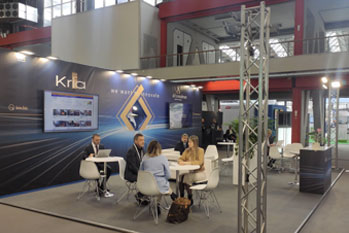
The last few years have been shaped by constant growth of the Group, fueled by some success factors that characterize it. Above all, the ability to innovate both from a technological and a software point of view. And again, the qualified technical assistance, thanks to the skills gained over the years and the multilingual call center. laBconsulenze, therefore, is an ambitious Group, determined to innovate every day, with the typical determination of those who know what they want and always move their goals forward. A Group that focuses on flexibility, continuous improvement and reliability.
—
TWO QUESTIONS TO
Stefano Arrighetti, R&D manager of the laBconsulenze Group
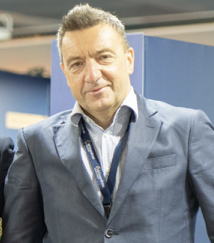
What are the factors that make Kria an international reference point in the sector?
Computer Vision and Artificial Intelligence in Kria have always been fundamental components and represent the core of the research and development activities that consolidate the technological primacy of its devices, based on international patents to monitor traffic and measure the speed of vehicles, using images of own cameras. The fusion of the recognition functions with those of metrological measurement is the element that identifies Kria on the international market. There are, however, other areas in which we are heavily investing, in particular big data and data analytics.
In your opinion, how will the market evolve? What is the trend of Public Administrations in the choice of technologies?
The P.A. will evolve in line with the legislation. In Italy, to date, the Highway Code limits the application of the technology to a few limited cases of detection for sanctioning purposes. Abroad, the situation is very different and the police have the ability to apply new technologies and ask manufacturers to create devices capable of detecting and documenting dangerous violations with ample discretion. We hope that Italy can recover the lost ground. Personally I would consider very useful in terms of road safety the introduction of devices for the detection of the improper use of smartphones, for the monitoring of pedestrian crossings and for the detection of speeding that I would make mandatory near schools and within the LTZ. |
|
|
|
|
|
|
Play it safe with MOOVA Passenger Flow

Overcrowding on public transport has become an increasingly important issue for passengers especially due to the COVID-19 pandemic. According to a recent survey conducted by Istat and the Ministry of Infrastructure and Sustainable Mobility (MIMS), in the second half of 2021, the choice of transport mode for workers and students is, in more than half of the cases, determined by the fear of COVID-19 infection (Source 1_Executive Summary_Position Paper ASSTRA_20211214).
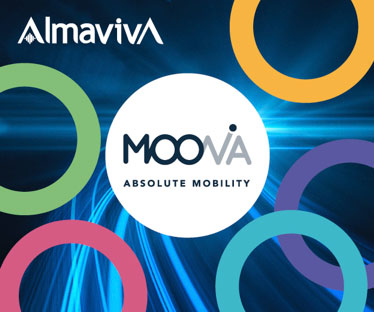
MOOVA Passenger Flow, the flagship of MOOVA, AlmavivA's platform for sustainable, multimodal, as-a-service mobility, meets the needs of transport companies in terms of safety and service usability.
MOOVA Passenger Flow allows the near real-time monitoring of the number of passengers and the state of crowding of vehicles in service. Data from heterogeneous sources (onboard, ground, external providers such as telephone operators) are collected by MOOVA Information Hub, processed and cross-referenced with the vehicle master data and service capacity. Using sophisticated algorithms, MOOVA Passenger Flow provides a near real-time projection of passenger flows, which can be used in time by companies to reschedule services and provide customer information.
In addition, MOOVA Passenger Flow enables statistical analysis that can be used for supply planning purposes to efficiently and effectively respond to dynamic passenger demand.
To find out more:
https://www.almaviva.it/en_GB/Transportation-and-Logistics/Moova |
|
|
|
|
|
|
The FENIX project

FENIX (European Federated Network of Information eXchange in LogistiX) is a European project co-funded by the European Commission through CEF (Connecting Europe Facility) programme, whose main objective is to provide a single network for sharing data for logistics actors across Europe.
The FENIX project, which is internationally coordinated by Ertico, started in April 2019 with a duration of 48 months covering 11 "pilot" activities in 9 corridors of the TEN-T network.
The national participation, coordinated by the Ministry of Sustainable Infrastructures and Mobility, with the support of TTS Italia as project management, is developed on two "pilot" activities involving the Trieste area and the Italian part of the Rhine-Alps (Lombardy, Liguria and Piedmont).
The Polytechnic University of Bari, ordinary member of TTS Italia, coordinates the activities of the Trieste pilot, a strategic point for freight transport in the whole of Italy.
In particular, FENIX aims to implement the first European federated architecture for data sharing, at the service of the European logistics community, made up of actors and public authorities that are involved in logistic services and mobility. It also aims to create a federated network of European IT platforms related to logistics and transport, allowing the sharing of information and services necessary to optimize the TEN-T during the four years of the project.
FENIX objectives
The initial status was based on a number of computer platforms that operated with limited, sporadic and unplanned connections. The final goal of the FENIX project is to optimize what existed and create new platforms and new services within the federation, so that each node of the network could safely exchange data and services.
The recommendations of the European Commission’s Digital Transport and Logistic Forum (DTLF) highlighted that the aim is not to create a centralized system but a valid federation of platforms capable of guaranteeing interoperability between any federated platform as an enabler of Business to Administration data (B2A) and Business to Business (B2B) data exchange with sharing by transport and logistics operators.
The aim of the project is to overcome today's fragmentation and lack of interoperability between ICT-based systems for logistical decision-making.
The research group of the Department of Electronic and Information Engineering of the Polytechnic University of Bari is carrying out various challenging activities in the project, which are not limited to the coordination of the pilot site in Trieste, such as the definition of the governance model of the federation which is based on key principles of interoperability, safety and control.
Trieste pilot activities
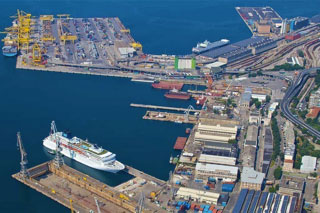
In detail, the pilot site in Trieste operates as a “Living Lab”, starting from research and development up to implementation and validation through the definition and testing of real use cases. Specifically, the Trieste pilot has the task of federating the highest number of platforms (eight), a symptom of both the great dynamism of the partners involved and the willingness of our operators to participate in the development of logistics in accordance with European guidelines; proved by a large participation in the project. In details, the partners involved are, in addition to the Polytechnic University of Bari, which is responsible for the pilot: the Port Authority of the Eastern Adriatic Sea Port System of Trieste, Interporto di Trieste, Autovie Venete, Alpe Adria, Info.era, Matras, DBA LAB, Codognotto, Pluservice and SWARCO.
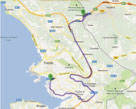 The pilot site is diversified into nine use cases: estimated time of arrival (ETA) evaluation, CO2 and NOx emissions reduction, Multimodal route planning, Track & trace vehicle / shipment, Dangerous goods, TM2.0 for multimodality, Parking booking service and B2A, A2B services. The pilot site is diversified into nine use cases: estimated time of arrival (ETA) evaluation, CO2 and NOx emissions reduction, Multimodal route planning, Track & trace vehicle / shipment, Dangerous goods, TM2.0 for multimodality, Parking booking service and B2A, A2B services.
To date, most of the platforms involved have created their own “connector” necessary to allow each individual platform to interact with the federation of European platforms that are part of the FENIX project; the testing phase is currently about to begin. The next operational tests will see, for example, a smart device application for the management of ETAs and dangerous goods developed by the Polytechnic University of Bari. These applications will be used by another partner of the Trieste site, CODOGNOTTO, whose data will be visible on the AEOLIX platform (platform also used by the pilot sites in Spain and France).
Next steps
To date, the entire project consortium is studying how to set up and maintain the FENIX specifications in order to allow new platforms that want to federate to share data, including the harmonization and cross-border interoperability.
The next step should provide guidelines, recommendations and advice to facilitate the development of policies and initiatives in line with the data sharing concepts in support of data sovereignty, data privacy, open standards, certifications and Internet of Things concepts.
“Being able to communicate throughout Europe with a single, secure and fast system is the great challenge of this project”, emphasizes Maria Pia Fanti, Professor of Automation and head of the Automation and Control Laboratory, which coordinates the activities of Polytechnic University of Bari in the FENIX project. The European Union is doing a lot for this goal and we hope that this project will be able to make the right contribution. We expect positive results, also to give a valid technical support to the competent authorities.
|
How to revolutionize on-the-go ticket sales
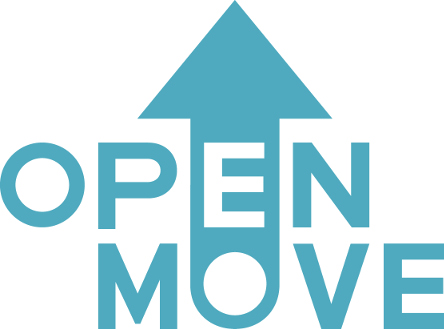
The experience of one of its long-standing customers, Airport Bus Express, which operates airport transfers in the city of London (United Kingdom) represents for OpenMove a significant testimony to the importance of multichanneling to capture a wider user base and consequently increase sales. While on one hand there are completely digital solutions to accommodate users who purchase the ticket in advance in complete autonomy (through mobile apps and e-commerce such as the solution OpenMove WAY), on the other hand transport operators must have the ability to perform sales on board or at the bus stop, especially in dynamic travel scenarios such as airport-city routes covered by high-frequency shuttle services.
For Airport Bus Express, OpenMove has implemented two different solutions aimed at enriching and diversifying the distribution and sales channels, which serve two distinct customer segments.
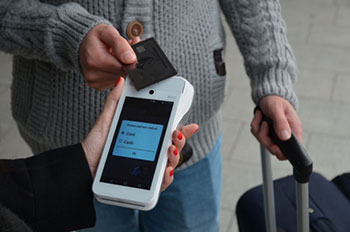
POS payment
Thanks to an extremely high performance and reliable all-in-one tool (the PAX A920 device used for this project is visible in the photo), it is possible to accept credit card payments in a fully integrated way in the ticketing system. The POS is especially important for tourists, a heterogeneous user category that makes use of multiple currencies, and represents a differentiator to be chosen by those who (and there are more and more) prefer credit cards to cash and therefore offer a better alternative over the competition.
The so-called second generation POS devices are very versatile tools that allow to host our OpenMove ACT solution on board. They represent the ultimate tool for the staff in the field, who can benefit from an integrated device capable of providing for print, smart card issuance, validation, POS (Point of Sale) and AVL (Automatic Vehicle Location) capabilities and which therefore acts as a single enabling element for all operational scenarios in the field: sale, inspection, collection and tracking of the vehicle.
OpenMove has paid great attention to the overall user experience (UX) of the operators, who often find themselves working in challenging conditions; the clear and simple graphical interface and the seamless flow of operations result in smoother and faster sales, with the dual advantage of a proven increase in revenues and decrease in frustration due to its ease-of-use and comprehensive design.
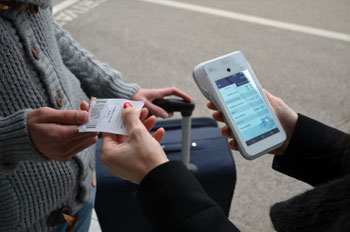
Express purchase with QR Code
The Covid-19 pandemic has definitively cleared the use of the QR Code by ubiquitous segments of the population, who have embraced the urgency and immediacy of this call-to-action and who identify it as an access point in the digital world. So why not use the newly formed attention of the ridership and as a catalyst to encourage self-service purchase of travel tickets, even on-the-go?
For many of its customers, OpenMove has implemented a solution that is as simple as it is effective: a simple QR Code sticker placed at the departure of the bus that allows you to book a seat and purchase a ticket for the next ride with a single tap. Operation is radically simple:
• the user frames the QR Code with the smartphone
• a page opens containing the default ticket for the corresponding route, with a recap of the necessary information
• there is only one button, which triggers the payment with the built-in systems natively available on iOS and Android, namely Apple Pay and Google Play, or alternatively by manually entering the credit card number
The advantages of this solution are soon realized due to the fact that more than 2 billion people on the planet have their credit card already linked to their smartphone. For them, literally a single tap is enough: the operating system automatically pre-fills first name, last name, email and credit card. The user experience is so seamless and so easy to use that it instantly becomes an element of marketing and differentiation from the competition, for instance by catching the travelers’ attention with captivating messages such as “Skip the line!”.
Operational management is also straightforward: thanks to the OpenMove ATLAS dashboard, it is possible to configure the system, automatically generate the QR Codes to be posted at the bus stop and dynamically associate them with routes and fares at will.
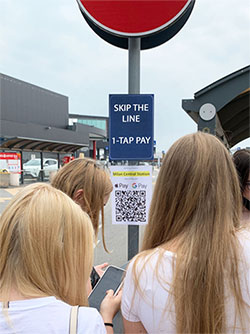
|
|
|
|
|
|
Anas Smart Road: a monitoring solution for safety on construction sites
Anas Spa, TTS Italia ordinary member, has been actively involved since 2015 in the realization of the Smart Road project which aims to create a digital road, obtained through the application of modern technological innovations, destined to generate a multiplicity of data and services of interest for the infrastructure manager, road users and authorities.
The OPEN ITALY ELIS co-innovation program fits into this perspective, which allowed Anas, together with the startups Horavision and appFORGOOD, to collaborate in a three-month PoC (Proof of Concept) for the realization of the prototype IN system. -TIME (Instant Notifier - Total Infrastructure Monitoring).
The system is actually part of the Smart Road project with the aim of carrying out monitoring activities of operating conditions through innovative services that can draw on latest generation technologies such as IoT, Big Data, Artificial Intelligence and Machine Learning, with the aim of fully exploiting the processing potential of a large amount of data in order to enhance user safety and optimize the management efficiency of the road network.
IN - TIME represents the innovative technological island equipped with two Smart cameras with 360 ° total vision, to be installed at the beginning of the construction site, which through artificial intelligence algorithms and computer vision applied to video streams, allows to recognize possible threats and situations of danger caused by risky driving behaviors of vehicles in transit near the construction site. Dangerous situations are promptly recognized on-edge by the technology island and notified in real time through two different types of alerts:
Video alerts on the Anas Central platform used by operations room operators (RMT - Road Management Tool), with the aim of speeding up the activation times of emergency procedures;
Video and vibration alerts on smartwatches used by construction site workers, with the aim of promptly warning them of possible dangers in their surroundings.
The IN-TIME island specifically has two 180 ° cameras, positioned at a height of 4 meters from the ground, which allow a total 360 ° view of the road infrastructure and in fact represent a watchful and constant eye to avoid only to recognize but also predict possible critical situations near the road construction site, with the ultimate goal of increasing safety by notifying the workers involved in time.
IN-TIME is a portable hardware station to be set up on site, capable of:
Compute image-processing algorithms, recognizing dangerous situations and calculating alerts, directly on edge;hHave a high degree of protection against dust, water and shocks; behave as a gateway for sending alerts calculated on "field" to Anas central systems through the Anas Smart Road infrastructure; the technological island uses the Anas Wi-Fi network made available by the Multifunctional Stations; stations installed equally spaced along the sides of the carriageway to allow complete coverage along all Smart Road sections.
Subsequently, a high throughput fiber optic network allows bidirectional communication from the Multifunctional Station to the Anas Central System, allowing the immediate sending of the alerts calculated by the IN-TIME System to the platform used by the room operators and to the smartwatches, also connected to the Wi-Fi network.
The prototype solution was tested on the "Anas Smart Road" A91 RM-FCO, a strategic section for the connection of Rome to the Leonardo da Vinci airport, with approximately 13 km of technological infrastructure and 42 multifunctional workstations.
The IN-TIME technology island was installed inside a real construction site and the construction site workers were equipped with smartwatches capable of communicating with the system.
The solution was tested by simulating dangerous driving behaviors such as unauthorized entry into the construction site lane or exceeding speed limits, and verifying the correct reception of the alerts both to the operating room system and to the workers on the construction site.
The IN-TIME solution, for monitoring construction sites, has demonstrated the timeliness in identifying imminent dangerous situations near the construction site, allowing not only a reduction in reaction times useful for safeguarding the safety of the personnel in service but also to speed up emergency interventions.
The innovative character of the solution is represented by the technological island itself and the application of Artificial Intelligence and Computer Vision technologies on smart cameras that allow a total 360 ° view of the entire infrastructure, with all the ensuing benefits deriving from a complete monitoring compared to standard monitoring where the camera is able to frame only a limited portion of the road.
A concrete result that has allowed us to see the effectiveness of a smart solution, easy to install in the field and use, which aims to increase safety near road construction sites and which has numerous advantages, both in terms of functionality and of efficiency, making it possible to implement new services for road users.
Source: PIARC
|
|
CIRCLE Group and CARGO START together for multimodal logistics
CIRCLE Group, specialized in the analysis of processes and in the development of solutions for the digitization of the port sector and intermodal logistics and in international consultancy on the issues of the Green Deal and the energy transition led by the Innovative SME listed on Euronext Growth Milan Circle S.p.A., and TTS Italia ordinary member, integrated the MILOS® Global Supply Chain Visibility, Master SPED® and Master TRADE® suites with StarTracking®, the first airport-to-airport tracking solution with real-time status updates developed by CARGO START.
The main objective of the new collaboration, which will be illustrated during a joint event scheduled for Tuesday 28 June 2022 (registration at this link), is to offer logistics operators, shippers and industrial companies complete multimodal visibility and even more control. effective management of their air shipments, the digital and integrated management of the supply chain and the possibility of using innovative customs procedures.
In other words, the ability to manage and monitor operational processes through a single dashboard makes it possible to significantly improve productivity and ensures a consistent increase in the quality and transparency of logistics flows.
For CIRCLE this project is particularly significant in the strategic perspective of the roadmap 2024 "Connect 4 Agile Growth", which plans to support all users of the logistics chain by contributing to the transformation of the Supply Chain in the name of ever greater usability, integration, efficiency, safety and environmental sustainability.
Source: Circle Group
|
|
CIRCLE GROUP: launches Milos® Global Supply Chain Visibility for Manufacturing & Distribution
CIRCLE Group, specialized in the analysis of processes and in the development of solutions for the digitization of the port sector and intermodal logistics and in international consultancy on the issues of the Green Deal and the energy transition led by the Innovative SME Circle S.p.A. (listed on the Euronext Growth Milan market organized and managed by Borsa Italiana), and TTS Italia ordinary member, launches the Milos® Global Supply Chain Visibility for Manufacturing & Distribution suite on the market.
At the basis of the development of this complete solution for the continuous monitoring and control of the Supply Chain, there are mainly the impossibility of communicating through compatible metrics such as to allow a rapid exchange of data and information between the various actors involved in the logistics process, the costs high associated with document processes and the use of paper, waiting times associated with redundant activities and operational inefficiencies.
Thanks to the new Milos® Global Supply Chain Visibility suite, industrial companies (primarily those with important international flows) can benefit from a single dialogue tool with all the players involved in the process (shipping companies, shipping agencies, transporters, MTOs, shippers, customs, etc.) which ensures, among other success factors, the complete elimination of paper, a reduction of between 60 and 90% of waiting / stopping times in port and logistic nodes, and a reduction in costs about 20-30% (depending on the case).
Able to interface, thanks to the "federative connectors" developed by CIRCLE, with the main ERPs and with the other software solutions used by the various players in the Supply Chain (primarily the other CIRCLE Group products such as Master SPED® dedicated to shipping and logistics) and thanks to the integration with the most advanced Internet of Things (IoT) tools, the platform ensures full digitalization of document flows (e.g. transport documents), customs simplification (import & export procedures), reduction of manual errors (checks proactive and automatic), documentary advance (in order to use travel to complete checks before the arrival of ships, planes or trains) and speed of information transmission (position of vehicles in real time), automation of processes and safety.
Source: Circle |
|
Digital twin for the rail sector: in May the webinar organized by Hexagon
It will be held on 11 May the webinar “Optimizing Rail Infrastructure Management With Digital Twins” organized by Hexagon, TTS Italia ordinary member.
Digital twin technology is driving innovation. The concept of a digital twin can be defined in many ways, but real-world outcomes drive digital twin implementation.
One of the key elements in rail operations is infrastructure management. This webinar will focus on creating a digital twin for rail infrastructure, addressing the data and systems necessary and identifying improvement and optimization potential.
In this webinar, we will discuss the necessary technology and how systems should be implemented to manage and optimize rail infrastructure. We will also focus on how digital twins can improve existing processes for direct ROI and digital asset management.
• The digital twin journey defined
• Systems that contribute to digital twin technology
• Technology challenges and what is possible now
• Real-world projects and state-of-the-art approaches and technologies
• Optimization of contributing systems
For registration, click here.
Source: Hexagon |
|
ESRI Italia: the 2022 Conference from 10 to 13 May
The Esri Italia 2022 Conference, TTS Italia ordinary member TTS Italia, is back in Rome, from 10 to 13 May.
The opening plenary session will discuss PNRR and ecological transition and the important role of businesses. In these difficult pandemic years, the digital market has held up, recording better performance of the economy as a whole. In this scenario, there is great expectation on the National Recovery and Resilience Plan, in the hope that public funds will be able to accelerate economic growth and digital transformation. The sectors that will benefit most from the use of PNRR funds for digital are Public Administration, Healthcare, Industry, Telecommunications, Transport, Energy and Utilities. In addition to digital innovation, the other great pillar of the PNRR is the environment. Companies, in particular, are entrusted with the key role of committing themselves to ensure that digital innovation also promotes a green revolution. In this context, with dynamic scenarios, Esri Italia wanted to dedicate its annual conference to the theme of ecological transition because knowledge of the territory and, more generally, the Science of Where, the expected changes in a sustainable key are crucial.
For further information and to register, click here.
Source: ESRI Italia |
|
OpenMove: ticketing and infomobility systems for the Chivasso public transport
OpenMove, TTS Italia ordinary member, was chosen by the Municipality of Chivasso to provide the new ticketing and infomobility system for local public transport. The goal is to provide citizens with all the tools they need to be free to move, thanks to a smart solution in terms of functionality, effectiveness and speed of implementation.
The multi-channel approach chosen by OpenMove makes it possible to intercept and serve all traveling users in the best possible way, from the student to the elderly person, while the possibility of finding information on the service easily and everywhere facilitates and encourages the use of the urban LPT service, for a city with fewer cars, cleaner and more citizen-friendly.
The project is part of a context that sees OpenMove increasingly present in the Piedmont area, with numerous public and private contracts awarded in the last 24 months, all in the name of more sustainable and user-centered mobility.
Source: OpenMove |
|
Rome approves MaaS Governance: key role for Atac and RSM
The Capitoline Government has approved a resolution that defines the governance of the MaaS (Mobility as a Service) system and outlines the functions of all the structures involved.
In particular, Atac, TTS Italia founding member, is entrusted with the task of MaaS Operators, that is, the entity that coordinates mobility policies and determines a framework of rules for transport service operators, MaaS operators and users; to Roma Servizi per la Mobilità (RSM), TTS Italia ordinary member, the position of MaaS Integrators, which offers the technological infrastructure on which to build the MaaS and enables the services from the technological point of view and the management of data useful for travel planning between different actors.
Source: Ferpress |
|
Scania invests around 100 million euros in a new test track for autonomous and electrified vehicles
There is a rapid development of autonomous and electrified vehicles. Scania, TTS Italia ordinary member, therefore plans further investments in Södertälje; a new test track where future vehicles will be tested and driven as a part of Scania’s research and development operations.
”Our ambition is to be a leader within electrification of heavy vehicles and also strengthen our ability in autonomous vehicles over time. It will take large investments to stay at the forefront. We evaluate and examine the possibility to build a test track adapted for future vehicles to meet the demand in autonomous and electrification we see is on its way,” says Anders Williamsson, Head of Industrial Operations, Scania.
Scania has recently completed a new foundry and the work with a new building for battery assembly is ongoing, both located in Södertälje. Now, Scania plans for yet another investment of about 100 million Eur, and this time it is regarding a new test track, as well as an extension of existing ones.
”We continue to invest locally in Södertälje, to be close to the whole chain with production, development and testing. It is vital for Scania, but also important for the cluster of vehicles in the greater Stockholm region and for Sweden’s ability to take lead in the development of sustainable transport solutions,” says Williamsson.
If Scania’s application to the count administrative board (Länsstyrelsen) is accepted, the ambition is to begin the work during 2022, and this is expected to last until at least 2026.
Source: Scania |
|
Stellantis participates in a US test of 5G connected vehicle technologies for real-time safety reporting
Stellantis, TTS Italia ordinary member, participated in the 'live' test of MEC (multi-access edge computing) and communication technologies for 5G cellular connected vehicles conducted by the 5G Automotive Association (5GAA) in Blacksburg, Virginia. The 'live' test of the new safety concept for drivers and pedestrians has pioneered a new roaming technology for traffic safety.
"Making roads safer for drivers and pedestrians is the ultimate goal of developing these next-generation technologies," said Ned Curic, Stellantis Chief Technology Officer. "The Jeep® Wrangler 4xe plug-in hybrid is the perfect vehicle for these 'live' tests, equipped with vehicle-to-everything (V2X) technologies and driver safety alarm. Together with 5GAA, we are working with industry leaders around the world to pave the way for autonomous technologies to benefit our products and, consequently, our customers. "
Stellantis actively participates in various initiatives around the world, including a similar test program in Turin, to evaluate 5G cellular technology and the management of large volumes of data, including sizing and configuring processing capabilities within the vehicle. High-speed wireless communication is a key element in enabling higher levels of vehicle range, as are future technologies for mobility and related services.
Test devices installed on the Jeep Wrangler 4xe plug-in hybrid allow the vehicle to report its location to surrounding infrastructure to warn pedestrians and other vehicles, as well as receive emergency alerts from the cellular network.
The 5GAA connected car concept uses on-site fixed cameras and sensors to collect detailed data that adds to what the vehicle can "see" using its on-board systems. With a high-speed 5G cellular connection and MEC technology, the system can make decisions quickly where data is collected, such as at an intersection, to communicate any safety hazards to oncoming pedestrians and vehicles.
5GAA partners who have participated in the program in Virginia include: Intel, Verizon, American Tower, CapGemini, Telus, Harman, Virginia Tech Transportation Institute, and the Virginia Department of Transportation.
Source: Stellantis |
|
Targa Telematics appoints ami mintzer as connected car director
Targa Telematics, tech company specialised in the development of digital solutions in the field of telematics, and TTS Italia founding member, has appointed Ami Mintzer to the Connected Car Director position. Mintzer will further promote Targa Telematics’ international growth, with particular focus on the business of connected cars in the European fleet management market.
With over 25 years of experience under his belt, Mintzer boasts an acute understanding and an extensive knowledge of the sector. Having worked in various companies as head of sales and business development in the connected car space, he was involved in the application of advanced technology, telematics and especially OEM vehicle data, which fuelled substantial client innovation.
The appointment of Ami Mintzer contributes to Targa Telematics’ path of expansion in Europe, having already established offices in the UK, France, Spain and Portugal, and with business activities tapping into the wider European market.
Alberto Falcione, Vice President Sales of Targa Telematics, stated: “We’re pleased that Ami has joined our team of professionals. His long experience and in-depth knowledge of the sector will allow us to further boost Targa Telematics’ growth in Europe and will help us to consolidate our market presence. Targa Telematics creates value for its clients by processing of data through its agnostic hardware platform, an open system which integrates data from after-market devices and from OEM data streams, which we will be able to strengthen thanks to Ami’s important experiences.”
“Having worked for several years in the automotive industry and, in particular, the connected car fleet management sector, I was able to follow attentively Targa Telematics’ evolution in the past few years” said Ami Mintzer, Targa Telematics’ new Connected Car Director. “The company’s incredible development and the results it has achieved are testament to its management’s determination and commitment to acquiring a position of international leadership and to innovate the sector through its unique technological, organizational and product development processes. That is why I decided to join the team, to contribute to the company’s continued expansion.”
Source: Targa Telematics |
|
Targa Telematics receives the EcoVadis silver medal for its ESG performance
Targa Telematics, the tech company specialized in the development of digital solutions in the telematics, smart mobility and mobility IoT platform field, and TTS Italia founding member, has been awarded the Ecovadis Silver medal for its achievements in corporate social responsibility.
EcoVadis is the world's largest and most reliable provider of corporate sustainability assessments. Through a methodology built on international standards, it monitors a company's performance upstream in its value chain, certifies its level of sustainability, and then shares it with all its stakeholders. To date, the EcoVadis database has more than 75,000 companies evaluated in 160 countries across 200 industries.
“This is the first time that we have undergone EcoVadis certification and we are proud to have received this recognition that rewards our efforts in the sustainability field, achieving results well above the industry average. For us, ESG and CSR values have always been part of our DNA. The silver medal that we have been awarded at the first assessment encourages us to continue to strive to improve the best practices already adopted that are part of our corporate heritage and increase efforts on this issue that is fundamental for us” said Nicola De Mattia, CEO of Targa Telematics.
EcoVadis awarded the silver medal to Targa Telematics after a long and painstaking assessment of 21 parameters under four macro-themes: environment, labour practices and human rights, ethics and sustainable procurement. Targa Telematics scored higher overall than the average in its industry, ranked in the top 25% companies with the best scores. |
|
|
|
|
|
|
|
Next Generation Mobility is back. TTS Italia among the sponsors and speakers of the event.
The second edition of Next Generation Mobility kicks off from 3 to 5 May, in Turin and in Live Streaming. TTS Italia is among the sponsors of the event that sees mobility as the protagonist, an essential service and a citizens’ right guaranteed by the Italian Constitution. This year the intention is to put this concept at the center together with that of sustainability, two closely related topics. These issues will also be accompanied by those of inclusion and accessibility, technological innovation and strategic planning, decarbonisation and connected mobility.
TTS Italia will also be among the speakers at the event, represented by Matteo Antoniola, 5T and Coordinator of the TTS Italia Working Group on Mobility as a Service (MaaS). Technologies for MaaS will be discussed in the “Mobility as a service” session on May 3, from 2.00 pm to 6.00 pm.
There will be three days of debates and discussions with representatives of institutions, companies, start-ups and universities that offer the opportunity to become part of a network of over 20,000 stakeholders. This edition is characterized by the opportunity to participate in conferences, networking and meetings in full compliance with health regulations and everyone will be able to follow the various interventions in web streaming.
For more information on the event: www.ngmobility.it |
|
TTS Italia welcomes its new members!
Following the last Board of Directors, TTS Italia is pleased to welcome its new members:
UNICOCAMPANIA Consortium (www.unicocampania.it): represents 14 companies of local Campania public transport that make 100% of the offer on rail and cable and over 90% of the offer on road in the entire Campania Region. It deals with the development and implementation of the tariff system defined by the Campania Region as the tariff regulator and implemented by the local authorities as far as they are concerned, with the aim of increasing the traffic revenues of all the consortium public transport companies operating in the Campania regional area. The consortium companies are: AIR CAMPANIA, ANM, A.B.C.D. MOBILITY, BUS LAMANNA, DAV, TRENITALIA, BUSITALIA CAMPANIA, CIAV, COSAT, CTP, EAV, SITA SUD, TROTTA BUS SERVICE and FRANCESCO & GIUSEPPE MANSI.
Siemens (www.siemes.com/intermodal): Siemens Mobility GmbH, a Siemens AG company, has been a leader in transportation and mobility solutions for over 160 years. Siemens Mobility is constantly innovating its portfolio in the core areas of rolling stock, railway automation and electrification, turnkey systems and services. Through its digital intermodal solutions, Siemens Mobility works with urban, regional, and national mobility operators around the world to make infrastructure smart, increase value sustainably throughout the life cycle, improve passenger experience. and ensure availability. It provides a unique and holistic ecosystem of digital services and solutions. From travel planning to communication with passengers to mobile ticketing, payment and complete Mobility as a Service (MaaS) solutions, from fleet management to train planning systems, from seat reservations to performance management solutions. |
|
Research study validates FENIX Network goal of improved processes in transport and logistics sector
ERTICO’s coordinated FENIX project, also involving TTS Italia as the implementing body of the Italian Ministry of Sustainable Infrastructures and Transport, recently conducted a study to determine support levels and achievable outcomes in the effort to standardize multimodal transport networks and systems. The clear message is that digitization and interoperability are preferred over inefficient and incompatible paper processes.
Study participants hailing from the European transport industry affirmed their support for digital standards across the continent, which gives weight and validity to FENIX (the European FEderated Network of Information eXchange in Logistics), a project that aims to improve the efficiency of transport and logistics processes.
Over 90% of respondents gave the role of digital standards at least four out of six stars when asked to rate the importance of improved digitization and interoperability among logistics providers and countries.
Respondents believe that an interoperable digital supply chain and standardized protocols have far-reaching benefits. These include increased transparency and efficiency because operations can be sped up, manual data entry can be avoided, and complexity and errors can be decreased, which in turn lower administrative costs and increase resilience during business disruptions.
Challenges to implementing standardization across the industry include a lack of knowledge about existing data solutions and also perceived advantages of maintaining proprietary ownership of developed software.
The study results provide the backbone for the next phase in the FENIX Network development and more detailed results can be found here on the research page of FENIX Network website.
The FENIX Network is co-financed by the Connecting Europe Facility of the European Union. |
|
MaaS: 1st Staff Exchange TTS Italia – University of Aveiro within the PriMaaS project
The PriMaaS project staff exchange programme has been constrained by the effect of pandemics. However, following the easing of restrictions, partners are taking the first steps towards closer cooperation between regions.
TTS Italia was the first partner to host a staff exchange in the past day. Following the Edinburgh interregional event, Sofia Suarez from the University of Aveiro participated in a three-day meeting of exchange of experience in TTS Italia headquarters.
Under a MaaS scheme, users typically choose to pay per trip or subscribe to bundles of mobility services. How to design these bundles (mobility packages) is central to their potential of inducing behavioural change and profitable business.
Fruit of the experience of TTS in previous projects, the plan of activities for this training period is to study and evaluate the existing literature and common practices for the design of mobility packages tailored to the specific socio-economic context of each region.
This exchange of experience event is aligned with the PriMaaS main vision of promoting MaaS but ensuring it leads to a behaviour change towards sustainability. Partners will cooperate to improve the implementation of action plans in PriMaaS regions by having a better knowledge of:
a) What do users value most of MaaS product bundles (e.g., specific modes and services, incentives, added-value information) that would support decision makers achieve sustainable mobility goals and help business tailor their product and service offering?
b) Regional-specific impacts on travel behaviour
c) Regional differences in design outcomes between products and potential impacts to lowering mobility footprint
The conclusions will be shared with the remaining partners and, in turn, with their regional stakeholders to validate their feasibility in the local context.
This knowledge will be vital to improving the effectiveness and territorial impact of the regional action plans. For example, it will support better integration of flexible mobility services into a future wider regional MaaS package in Portugal. Learning to design efficient MaaS plans will also support determining how the ecosystem of mobility services between rural and urban areas of Tampere and Thuringia and the DRT South pilot Est Scotland may be optimized to lead to more sustainable use of services and infrastructures. The advisory Partner (University of Stockholm) will support PriMaaS partners in the methodological design to consulting local stakeholders and in analysing impact data generated from this study. |
|
|
|
|
|
|
• Italia-Cagliari
Video devices installation
• Italia-Fiumicino
speed detection systems
• Italia-Genova
police services
• Italia-Palermo
engineering and planning services
|
• Italia-Roma
programming of consulting softwares and services
• Italia-Roma
trains monitoring system
• Italia-Taranto
ticketing machines
|
|
|
|
|
|
|
|
|
|
|
|
|
|
|
|
|
|

Next Generation Mobility
3-5 May 2022, Turin and online
For further information click here →
Transpotec Logitec
12-15 May 2022, Milan, Italy
For further information clicca qui →
Connected Car & Mobility: la strada verso una nuova economia
27 May 2022 - WEB EVENT
For further information click here →
|
|

IT-TRANS
10-12 May 2022, Karlsruhe, Germany
For further information click here →
ITS European Congress
30 May- 1 June 2022, Tolouse, France
For further information click here →
|
|
|
|
|
|

